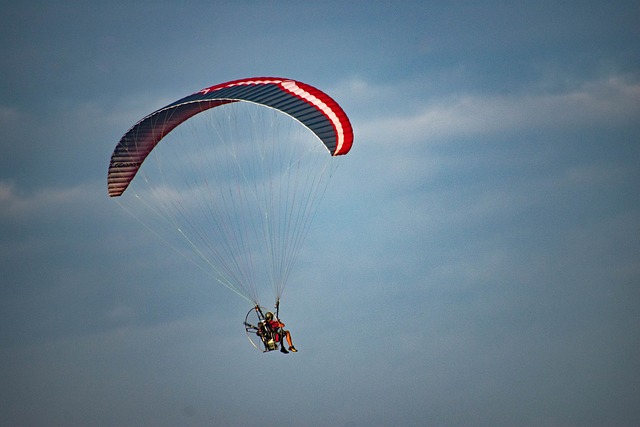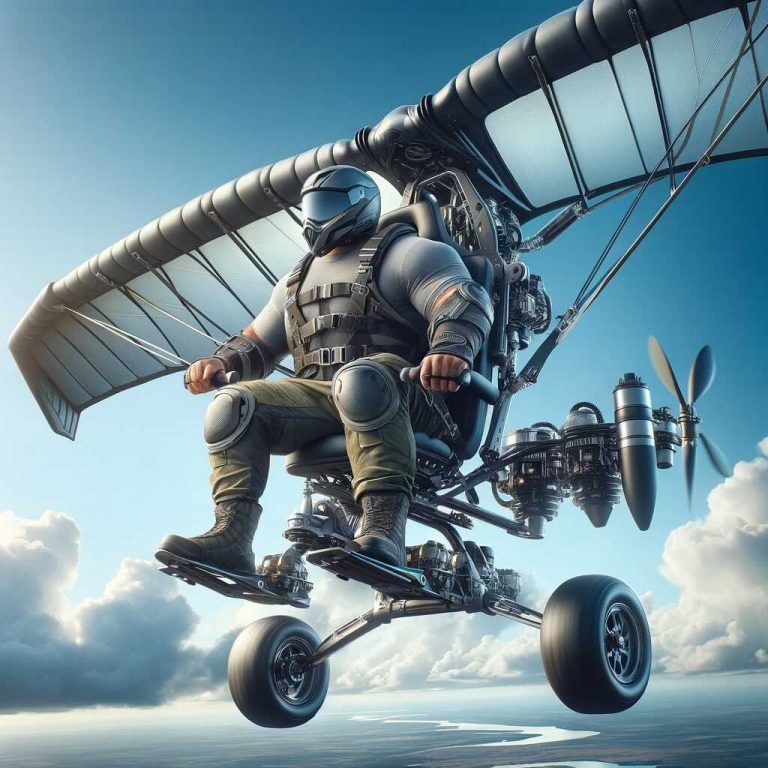Paramotoring, also known as powered paragliding, is a thrilling and accessible form of aviation that has been gaining popularity in recent years. With a paramotor, you can launch yourself into the air from almost any open space and experience the freedom of flying with nothing but the wind in your face. However, if you’re considering getting into this sport, one important question you might have is: How much does a paramotor cost?
Generally speaking, entry-level paramotors can cost less than $5,000, mid-range paramotors can cost $5,000 – $10,000, and high-end paramotors can cost $10,000 or more.
The answer is not a simple one, as the cost of a paramotor can vary depending on a number of factors, from the type of engine and propeller to the accessories and brand.
In this blog post, I’ll explore the different factors that affect the cost of a paramotor, as well as the cost ranges you can expect to encounter. I’ll also compare the cost of a paramotor to other essential equipment for powered paragliding, and give you some tips on what to consider when purchasing a paramotor.
By the end of this post, you’ll have a better idea of what to expect in terms of cost, and how to make an informed decision when investing in a paramotor. Let’s get started!
Factors Affecting the Cost of a Paramotor
The cost of a paramotor can vary widely depending on several factors. Here are some of the main ones to consider:
Type of Paramotor
There are three main types of paramotors: foot launch, trike, and electric. Foot-launch paramotors are the most common and affordable type, and require the pilot to run and lift off the ground with the motor on their back. Trike paramotors have wheels and a frame, which make them easier to take off and land, but also more expensive. Electric paramotors are a newer type of paramotor that run on battery power and are environmentally friendly but also tend to be more expensive.
Engine Size and Type
The engine of a paramotor is another major factor in its cost. Generally, the larger and more powerful the engine, the more expensive the paramotor will be. Two-stroke engines tend to be less expensive than four-stroke engines but may require more maintenance.
Propeller Type and Material
The type and material of the propeller can also affect the cost of a paramotor. Carbon fiber propellers tend to be more expensive than wood or plastic propellers but also offer better performance and durability.
Harness and Accessories
The harness and accessories that come with a paramotor can also impact its cost. Some paramotors may come with more advanced or comfortable harnesses, while others may require you to purchase these separately. Other accessories that can affect the cost include reserve chutes, GPS devices, and communication systems.
Brand and Model
Finally, the brand and model of a paramotor can also play a significant role in its cost. Some brands are known for producing high-end, top-quality paramotors that come with a premium price tag, while others may offer more budget-friendly options. Additionally, newer or more advanced models may cost more than older or simpler ones.
Cost Ranges for Paramotors
The cost of a paramotor can vary widely depending on the factors discussed above. Here are some rough cost ranges you can expect to encounter:
Entry-level Paramotors (less than $5,000)
If you’re just starting in paramotoring, an entry-level paramotor may be the best option for you. These paramotors tend to be less powerful and less advanced than more expensive models, but they can still provide a great flying experience. You can expect to pay less than $5,000 for an entry-level foot-launch paramotor with a small engine and basic accessories.
Mid-Range Paramotors ($5,000 – $10,000)
Mid-range paramotors offer more power and advanced features than entry-level models, but without the premium price tag of high-end paramotors. For example, you may find a mid-range trike paramotor with a larger engine and a more comfortable harness for around $7,000 – $9,000.
High-End Paramotors ($10,000 and up)
If you’re a serious paramotor enthusiast or professional pilot, you may want to invest in a high-end paramotor. These paramotors tend to be the most powerful, advanced, and comfortable models on the market, with prices to match. You can expect to pay $10,000 or more for a high-end paramotor from a top brand like Parajet, Fresh Breeze, or Nirvana.
It’s important to note that these cost ranges are just rough estimates and that the actual cost of a paramotor can vary widely depending on the specific model and accessories you choose. However, by understanding these cost ranges, you can better determine what kind of paramotor might be right for you, based on your budget and skill level. In the next section, I’ll compare the cost of a paramotor to other essential equipment for powered paragliding.
Comparison of the Cost of a Paramotor to Other Powered Paragliding Equipment
While a paramotor is the most essential piece of equipment for powered paragliding, it’s not the only thing you’ll need. Here are some other essential pieces of equipment, and how their cost compares to that of a paramotor:
Gliders
A paraglider is a wing that you use to fly when powered paragliding. The cost of a glider can vary widely depending on its size, material, and performance characteristics. Generally, you can expect to pay $2,000 – $5,000 for a high-quality paraglider. Keep in mind that a paraglider is an essential piece of equipment, and the quality of your glider can greatly impact your flying experience.
Reserve Chutes
A reserve parachute is a safety device that you can deploy in case of an emergency or malfunction of your main wing. These chutes can cost anywhere from $400 – $1,500, depending on their size and features.
Helmets and Other Safety Gear
Finally, you’ll need to invest in some safety gear to protect yourself while flying. A good helmet can cost anywhere from $100 – $500, while other gear like gloves, boots, and eye protection can add several hundred dollars to your total cost.
When you add up the cost of all of these pieces of equipment, it’s clear that powered paragliding can be a significant investment. However, by investing in high-quality equipment and taking the time to train and practice, you can enjoy a safe and exhilarating flying experience.
Considerations When Purchasing a Paramotor
When you’re ready to purchase a paramotor, there are several factors to consider. Here are some things to keep in mind:
Budget
The first and most important factor to consider is your budget. As we discussed earlier, the cost of a paramotor can vary widely depending on the type, engine size, propeller material, and brand. Determine how much you’re willing to spend before you start shopping, and stick to your budget to avoid overspending.
Skill Level
Your skill level as a pilot is another important consideration. If you’re just starting out, you may not need a high-end paramotor with all the bells and whistles. On the other hand, if you’re an experienced pilot, you may want a more advanced model that can handle more extreme conditions.
Intended Use
Think about how you plan to use your paramotor. Will you be using it for leisurely flights around your local area, or do you plan to embark on longer, more challenging trips? Different types of paramotors may be better suited for different uses, so consider your goals before making a purchase.
Brand and Model Reputation
Research the reputation of different paramotor brands and models before making a purchase. Look for reviews from other pilots, and consider factors like customer service, reliability, and resale value.
Maintenance Costs
Finally, consider the ongoing maintenance costs of your paramotor. Some models may require more frequent or expensive maintenance than others, and you’ll also need to budget for regular inspections and repairs.
By considering these factors, you can make a more informed decision when purchasing a paramotor. Don’t be afraid to ask questions and shop around to find the best option for your needs and budget.
Conclusion
While investing in a paramotor and all the necessary equipment can be a significant expense, it’s also an investment in a thrilling and liberating experience. By taking the time to research and consider your options, you can find a paramotor that fits your needs and budget and start enjoying the freedom of flight.
Remember, powered paragliding can be a dangerous sport if proper safety protocols are not followed. Always train with a certified instructor and follow all recommended safety guidelines to ensure a safe and enjoyable flying experience.
I hope this post has helped answer your question about how much a paramotor costs. As always, feel free to reach out with any additional questions or comments. Happy flying!








